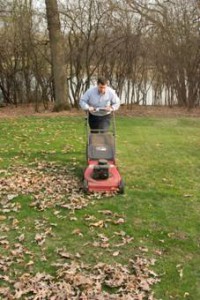This Spring I have been frequently asked how the hot temperatures we’ve experienced in March will affect our crabgrass control. Now that we have finally returned to “normal temperatures” I can better answer this question.
Spring accelerated from snow on the ground on March 3 to 62 degree soil temperatures on March 18. Crabgrass germinates when soil temperatures are at 55 degrees for 3 consecutive nights. We had over a week of soil temperatures above 60 degrees. Forsythia were blooming the 3rd week of March, which usually happens in mid-April. Crabapple trees were blossoming the next week, this usually happens in late April or early May. The grass was growing the last week or March, this usually does not happen until late April. We managed to rocket through 8 weeks of climate change in 3 weeks.
I struggled with the decision to continue applying crabgrass control knowing that it was too late to be effective. I had many discussions with other lawn care professionals and even professors at MSU. We were in unchartered territory and nobody knew what to do. History and logic told us that “this cannot be happening”, but it was. 80 degree temperatures in March are not uncommon. However, sustained high day time and night time temperatures are unprecedented. The temperatures usually plummets 40 degrees after an 80 degree day in March.
I made the decision in mid-March to continue applying crabgrass control with the hope of a frost. A frost would kill any crabgrass that germinated and our pre-emergent would then be effective stopping more crabgrass from germinating. I am glad I made that decision because this week we finally received that frost. Hopefully our weather is back to “normal” and we will have effective crabgrass control. Rest assured that if we applied your crabgrass control and you get crabgrass this summer, we will take care of it.




